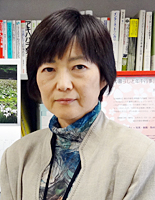From smart city to super city Masako Nakamura (Professor of Tokyo City University)

The latest “Smart City Index” released in April 2023 by the Swiss business school IMD (Institute for Management Development) ranks 141 cities.
Zurich ranked first, followed by Oslo, followed by Canberra and Copenhagen. The top Asian city was Singapore in seventh place. From Japan, Tokyo ranked 72nd and Osaka ranked 98th. There may be objections to this type of ranking, as it is greatly influenced by the way indicators are taken, but there are probably many people who are convinced by the top rankings.
It has been pointed out that Japan is lagging behind when it comes to smart city initiatives, but over the past few years, it has achieved many results. On the other hand, in February 2019, at the panel of experts (final report for the realization of the “super city” concept), smart cities have many initiatives in individual fields such as energy and transportation, and individual state-of-the-art technology demonstrations, etc. It was pointed out that the problem of staying
As the next step, the super city is expected to become a model case of a “whole future city” through interdisciplinary and co-creative community development.
A major issue in smart city and super city initiatives is the aspect of citizen participation. Since consensus building involving not only industry, government and academia, but also the participation of local residents as the main actors is required, the super city project in particular is expected to take an advanced approach to “participatory design.”
ICT and AI are the foundation of the super city itself, and are also deeply involved in “participatory design” to determine the course it should take. Among the recent efforts, the next-generation citizen collaboration platform “My City Report” and the consensus building systems “Decidim” and “Liquid” are attracting attention.
It goes without saying that there is a need for consensus building among industry, government, academia, and citizens at the planning stage aiming at the overall picture of urban development, but it is also important to consider the technical participation of citizens (Civic Tech), the proactive transmission of opinions and information, and the mechanical data collection. Opportunities for citizens to get involved in community development are also diversifying, such as giving consent (behavior history, personal information).
It is also becoming increasingly important to create a foundation that motivates and supports citizen participation, such as fostering a sense of ownership and social trust.
In urban planning and regional management, citizen participation and resident participation have been a long-standing issue, and many studies have been accumulated. As for measures using ICT, “electronic bulletin boards, electronic conference rooms” and “local SNS” have been introduced in many regions, and it has been pointed out that technical methods alone are not straightforward.
In this column, from the glamorous front stage of the development and implementation of cutting-edge technology, examples of initiatives for collaboration, co-creation, and consensus building with various stakeholders that may have been seen as plain behind-the-scenes work in the past I would like to take a look at the history of urban development, ICT, and regional computerization.
